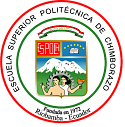Study of the Effects of the Troposphere on the GPS L1 Signal in Riobamba city.
DOI:
https://doi.org/10.47187/perspectivas.vol2iss1.pp38-44.2020Keywords:
Global Positioning System, Tropospheric Effect, Tropospheric Correction Models, RTKLIBAbstract
In the present work, the delay suffered by the GPS signal during the transmission through the propagation channel is analyzed, which is affected by factors, characteristics and conditions of the atmospheric layers. The troposphere due to the wet and dry components produces the hydrostatic delay which represents approximately 90% of the total delay of the signal that depends directly on the atmospheric pressure and the tropospheric delay which is influenced by the water vapor and the temperature. To estimate the delay, we chose the sample of the data of the days with the highest and lowest humidity and accumulated precipitation based on the Saastamoinen model, comparing the results with the analyzed data extracted from the EREC station of the GNSS Continuous Monitoring Network. Ecuador (REGME) through the processing of data with the RTKlib tool to assess the impact on the accuracy of the final solution in the positioning of the receiver.
Métricas
References
Mejora de los Sistemas de Cartografía del Territorio Colombiano, Marzo 2007. [Online]. Disponible en: ftp://gisweb.ciat.cgiar.org/DAPA/planificacion/GEOMATICA/GPS/GPS_Modulo.pdf
Espinal L., “Estudio de los efectos troposfericos en la precision de mediciones GPS enn el suroccidente colombiano”, Tesis de Ingeniería, Universidad del Valle, Cali, Colombia, Tech. Report., 2015.
Perdiguer R., “Estrategias de cálculo del retardo troposférico y su influencia en procesamiento GPS de alta precisión”, Asemblea Hispano Portuguesa de Geodesia y Geofisica, pp. 15 - 20, 2008.
Manzano R., “Análisis espectral del efecto troposferico en la señal GPS”, Tesis de Ingeniería, Universidad Nacional Autonoma de México, Mexico, 2014
Manzano R., “Análisis espectral del efecto troposferico en la señal GPS”, Tesis de Ingeniería, Universidad Nacional Autonoma de México, Mexico, 2014. p. 81.
Laboratorio de Astronomía, Geodesia y Cartografía, Abril 2017 [Online]. Disponible en: http://lagc.uca.es/web_lagc/docs/curso_rap/Presentacion_II.pdf
P. Molina, “Simulacion Numerica de un problema de contaminacion atmosferica”, Tesis Doctoral, Universidad Politécnica de Madrid, Madrid, 2013.
Alvarez J., “Analizar los efectos de la troposfera sobre la señal de GPS y el impacto en la precisión en el posicionamiento de un receptor dentro de la ciudad de Riobamba”, Tesis de Maestría, Instituto de Postgrado y Educación Continua, Escuela Superior Politécnica de Chimborazo, Riobamba, Ecuador, Tech. Report., 2017. p. 12
Researching GNSS and Real Estate delimitation. En Investigando sobre GNSS y delimitación de la propiedad. Abril 2017. [Online]. Disponible en: https://nagarvil.webs.upv.es/errores-atmosfericos-gnss-GPS/
Manzano, G. “Desarrollo de una metodología de actualización discreta de la cartografía catastral mediante la integración de técnicas GPS y SIG: Aplicación al catastro de Rústica en el T. M. de Nijar (Almeria)”. Tesis Doctoral, Universidad de Almeria, España., 2003. p. 87.
Recomendaciones UIT-R. Mayo 2017. [Online]. Disponible en: https://www.itu.int/pub/R-REC/es
Munich X., “Estudio sobre la influencia de los modelos troposféricos en observaciones GNSS”, Proyecto Final de Carrera, Universidad Politecnica de Cataluña, Barcelona, España, 2011. p. 26.
Meteored, Junio 2018. [Online]. Disponible en: https://www.meteored.com.ec/tiempo-en_Riobamba-America+Sur-Ecuador-Chimborazo--1-20215.html?d=historico
Boletin de Precipitación y Temperatura Zona 3. [Online]. Disponible en: http://sipa.agricultura.gob.ec/boletines/territoriales/precipitacion/2016/precipitacion_noviembre2016_zona3.pdf
Red GNSS de Monitoreo Continuo del Ecuador - REGME, Junio 2018. [Online]. Disponible en: http://www.geoportaligm.gob.ec/wordpress/.
Published
How to Cite
Issue
Section
License
Copyright (c) 2020 Monica Andrea Zabala Haro, Jhonny Alvarez, Jomaira Ruilova, Rodrigo Vinueza

This work is licensed under a Creative Commons Attribution 4.0 International License.
Copyright
The authors of the manuscripts will retain their copyright on their articles published in Pespectivas Journal. These rights allow the authors to present their manuscripts in public, prepare derivative works, reproduce them physically by printing and distribute them on their social or research networks. These rights will remain unchanged as long as the authors respect the publication and free access policy of Perspectivas Journal.
Publication Rights
Perspectivas Journal reserves all first publication rights on each of the articles that the authors have sent to its review and publication process. It implies that authors will only exercise their copyright if they state the source and origin of the publication correctly, mainly when they distribute, share, present, or use their articles' total or partial content.














